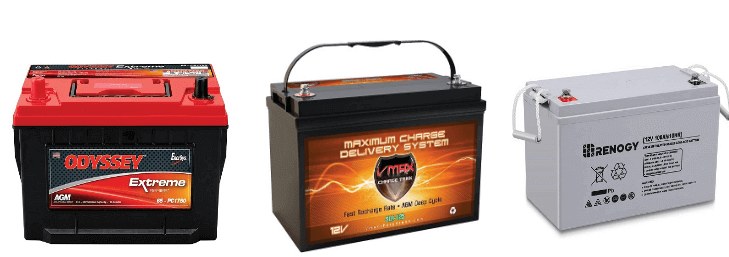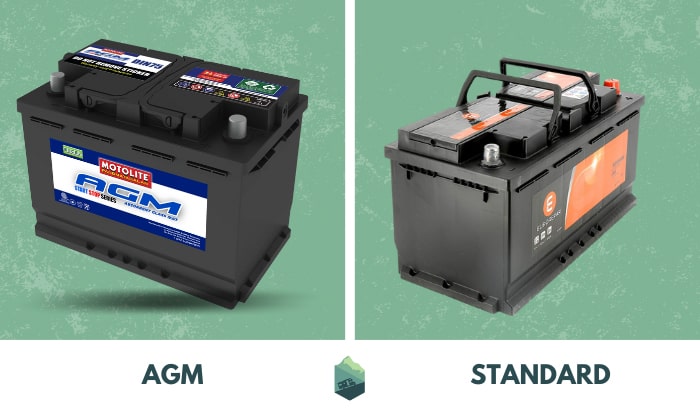How to Tell What Type of Battery You Have
To identify your battery type, check the label for specifications or use a battery tester. Different batteries have distinct voltage and sizes, so pay attention to these details when determining the type.
If you’re unsure, consult manufacturer literature or a professional for assistance. When it comes to electronics, knowing your battery type is crucial for maintenance and replacement. By recognizing the specific battery you have, you can ensure optimal performance and longevity for your devices.
Avoid using the wrong type of battery, as it can damage your equipment or pose safety risks. With a few simple steps, you can easily determine what type of battery you are working with and make informed decisions regarding its care and usage.

Credit: mechanics.stackexchange.com
Importance Of Identifying Battery Type
The importance of identifying battery types cannot be overstated, as using the wrong charging method or attempting to mix incompatible batteries can lead to damage and potential safety hazards. Knowing the type of battery you have ensures that you can take the necessary precautions and utilize the appropriate charging methods, prolonging the life of the battery and preventing unexpected issues.
Preventing Damage
Identifying the correct battery type is crucial for preventing damage to the battery itself and any devices it powers. Using the wrong charger or charging method for a specific battery can lead to overheating, overcharging, or even causing the battery to leak or swell, which can damage the device and pose safety risks.
Using Correct Charging Methods
By knowing the correct battery type, you can ensure that you are using the appropriate charging method. Different battery types require different charging rates and voltage levels. Using the correct charging method helps to maintain the battery’s health and performance, contributing to its longevity and reducing the risk of overheating or malfunctions.

Credit: www.electronicshub.org
Physical Examination
Physical Examination:
Check For Labels
- Look for any stickers or labels.
- Identify battery model or serial numbers.
Look For Distinctive Features
- Inspect for any unique shapes or colors.
- Observe any special markings or engravings.
Remember, a physical examination can help determine the type of battery used in your device.
Battery Specifications
Wondering how to identify your battery type? Look for specific specifications such as lithium-ion, alkaline, or nickel-metal hydride to determine the type of battery you have.
Check Voltage Rating
To identify your battery type, start by checking its voltage rating listed on the label.
If the voltage is 3.7V, you likely have a lithium-ion battery, while a voltage of 1.5V indicates an alkaline battery.
Determine Capacity
Capacity refers to the energy the battery can store, measured in milliampere-hours (mAh).
- High capacity batteries have around 2000 mAh or more.
- Low capacity batteries typically range from 300-1000 mAh.

Credit: www.outdoorbits.com
Battery Testing Tools
Battery testing tools are essential for determining the type and condition of a battery. By using the right tools, you can accurately assess the state of your battery and take appropriate action. Here are a few essential battery testing tools you can use to identify the type of battery you have:
Multimeter
A multimeter is a versatile tool that can measure voltage, current, and resistance. To determine the battery type, set the multimeter to DC volts and connect the positive lead to the positive terminal of the battery and the negative lead to the negative terminal. The multimeter will display the voltage, allowing you to identify the battery type based on the voltage reading.
Battery Analyzer
A battery analyzer is a specialized tool designed for testing batteries. It provides detailed information about the battery’s condition, including its voltage, capacity, and internal resistance. By using a battery analyzer, you can accurately determine the type and health of the battery, helping you make informed decisions about its usage and maintenance.
Common Battery Types
Identifying the type of battery you have is essential for proper usage and maintenance. Common types include lithium-ion, lead-acid, and alkaline batteries. Look for markings or labels on the battery itself or consult the device’s manual to determine its type.
Lead-acid Battery
Lead-acid batteries are one of the most common types of batteries used in various applications. These batteries have been around for a long time and are known for their affordability and reliability. They are widely used in cars, motorcycles, UPS systems, and other devices that require a stable source of power.
Lead-acid batteries are made up of lead plates and a liquid electrolyte solution. The lead plates are immersed in the electrolyte, which allows for the conversion of chemical energy into electrical energy. This conversion process is reversible, which means that lead-acid batteries can be recharged and reused multiple times.
One of the distinguishing features of lead-acid batteries is their relatively low energy density compared to other battery types. However, they compensate for this by delivering high current outputs, making them ideal for applications that require a power surge, such as starting a car engine.
Furthermore, lead-acid batteries require proper maintenance to ensure their longevity. They need to be regularly checked for electrolyte levels and, if necessary, topped up with distilled water. It is also essential to prevent overcharging, as this can lead to the production of harmful gases and reduce the battery’s overall lifespan.
Lithium-ion Battery
Lithium-ion batteries have gained significant popularity in recent years due to their high energy density and longer lifespan compared to other battery types. They are widely used in smartphones, laptops, electric vehicles, and many portable devices.
Unlike lead-acid batteries, lithium-ion batteries use lithium in the form of lithium compounds as one of their electrode materials. The other electrode typically consists of a transition metal oxide. These materials allow lithium-ion batteries to store and release energy through reversible chemical reactions.
The high energy density of lithium-ion batteries means they can store more energy in a smaller and lighter package compared to lead-acid batteries. This makes them an excellent choice for devices where weight and size are critical factors.
It is worth noting that lithium-ion batteries require specific charging and discharging protocols to ensure they operate safely and maintain their performance. Overcharging, for example, can cause the battery to overheat or even explode. Therefore, it is essential to use the correct charging equipment and follow the manufacturer’s guidelines.
While lithium-ion batteries generally have a longer lifespan than lead-acid batteries, their performance can degrade over time. Factors such as high temperatures and frequent deep discharge can accelerate this degradation. Therefore, proper care and maintenance are necessary to maximize the lifespan and performance of lithium-ion batteries.
Frequently Asked Questions Of How To Tell What Type Of Battery You Have
How Do I Know What Type Of Car Battery I Have?
To determine your car battery type, check the owner’s manual or look for a label on the battery itself.
How Do I Know If My Battery Is Agm Or Standard?
To determine if your battery is AGM or standard, check the label on the battery itself. Look for markings like “AGM” or “Absorbed Glass Mat” for AGM batteries. Standard lead-acid batteries typically do not have these designations.
How Do I Identify My Battery?
To identify your battery, check the label for model number, capacity, and voltage. Look for marking on the battery itself. If unsure, consult the manufacturer’s website or contact customer support for assistance.
How Can You Tell The Difference Between Agm And Gel Batteries?
AGM batteries are maintenance-free and have a higher capacity to store energy compared to gel batteries. They are also less affected by temperature changes and have a longer lifespan. Gel batteries, on the other hand, are more durable and have a lower risk of spillage.
How Can You Tell What Type Of Battery You Have?
You can check the labeling on the battery or consult your device’s user manual for information on the battery type.
What Are The Different Types Of Batteries?
Some common battery types include lithium-ion (Li-ion), alkaline, nickel-metal hydride (NiMH), and lead-acid batteries.
How Do I Identify A Lithium-ion Battery?
Look for the letters “Li-ion” or “Li-poly” on the battery label. These batteries are commonly used in smartphones, laptops, and portable electronics.
Conclusion
Understanding the type of battery you have is important. By following simple steps, you can easily identify the type of your battery. Knowing this information will help you take better care of your battery and ensure it lasts longer. With the right knowledge, you can make informed decisions about your battery needs.

